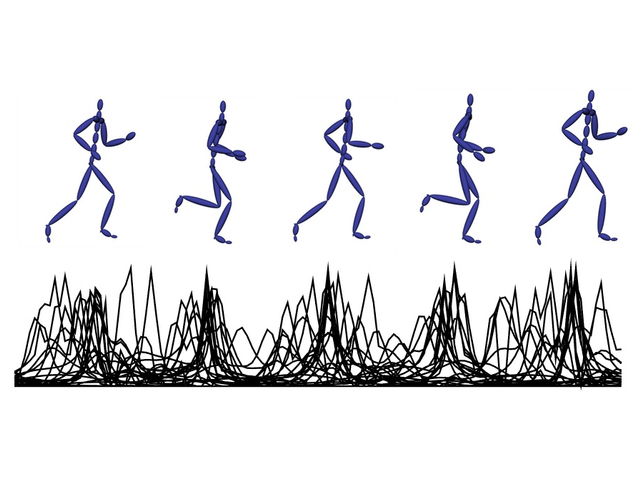Staggered Poses: A Character Motion Representation for Detail-Preserving Editing of Pose and Coordinated Timing
Patrick Coleman , Jacobo Bibliowicz, Karan Singh, and Michael Gleicher

We introduce staggered poses--a representation of character motion that explicitly encodes coordinated timing among movement features in different parts of a character's body. This representation allows us to provide sparse, pose-based controls for editing motion that preserve existing movement detail, and we describe how to edit coordinated timing among extrema in these controls for stylistic editing. The staggered pose representation supports the editing of new motion by generalizing keyframe-based workflows to retain high-level control after local timing and transition splines have been created. For densely-sampled motion such as motion capture data, we present an algorithm that creates a staggered pose representation by locating coordinated movement features and modeling motion detail using splines and displacement maps. These techniques, taken together, enable feature-based keyframe editing of dense motion data.
This is exported from Keynote. If you download it, it works like a presentation. Click to go through it in Quicktime Player, rather than using your browser's plugin. A couple illustration videos on the second slide don't play.
And on youtube:
Other Thoughts:
Not everything fits in a paper, and some things are discovered later. Here's answers to a few of the more common questions and some notes and references to other work that's related.
Our examples in the video and slides are only making subtle changes to the lower body, with most large changes applied to the upper body. While IK solutions that are blended in time work well for small changes like fixing footskate, we've noticed that they introduce weird artifacts when you blend in large adjustments to motion that's already fully specified. For now, we just avoided it in the demos, since it's not inherent to our approach. More on this later. :-)
An open question is when it makes sense to add timing variation to coordinated extrema. This hasn't been formally studied well on its own (to our knowledge), and most of what we know comes from the kinds of things that animators do and from our experience working with the system. Asymmetry applies all over the place--very few real world movements are symmetrical. Succession usually applies well to any unconstrained limbs. We've noticed, however, that it can look weird on sudden, goal-directed movements. Other work that applies some kind of timing variation includes Aesthetic Edits, Wiggly Splines, and Brain Springs.
There is a small mistake in the discussion on optimizing orientation spines. It should refer to minimizing squared angular differences on S^4, not SO(3).
Support:
This research is financially supported by MITACS, and Maya was generously donated by Autodesk.